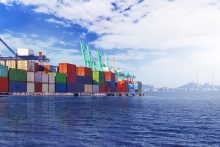
These ports have been given the authority to establish a scale of rates for port services and assets. Tariffs can be set by PPP concessionaires based on market conditions, for example. The compact Board of Directors, comprised of experienced independent members, is capable of boosting decision-making and strategic planning.
Prior to the implementation of the Act, the overall capacity of major ports and the volume of cargo handled were as follows:

*million tonnes per annum
Connectivity is a vital enabler for ports since it is the end-to-end efficacy of the logistics chain that promotes industrial competitiveness. The Sagarmala initiative features a particular pillar of port connection projects to improve connectivity between ports and domestic production and consumption hubs.
Under Sagarmala, 190 road and rail connectivity projects costing Rs 1.22 lakh crore have been identified for execution, with an emphasis on connecting large and minor ports. Fifty of these projects have been finished, while the remaining 140 are in different phases of development and execution. The Ministry of Road, Transport, and Highways (MoRTH), major port authorities, and other state organisations are principally in charge of implementing these projects.
The government has launched a number of programmes aimed at port modernisation, automation, and digitalisation, with a focus on ease of doing business. This includes the implementation of web-based e-forms, direct port delivery, container scanners, radio frequency identification-based technologies for gate automation, a single window interface to facilitate commerce, and the integration of more and more seaports with the Port Community System software.
Furthermore, globally benchmarked objectives have been developed as part of the Maritime India Vision (MIV) 2030 to assist India in developing best-in-class port infrastructure. The development of Indian ports is expected to save EXIM clients Rs. 6,000-7,000 crore in annual costs and release Rs. 70,000–75,000 crore in potential revenue. MIV 2030 aims to add 423 MTPA of capacity to major ports during the next 10 years. This capacity increase is expected to cost more than Rs. 33,400 crore in total investment. Major Ports are projected to propose roughly 95 per cent capacity growth under Public Private Partnership (PPP)/Captive mode.
Sarbananda Sonowal, Union Minister for Ports, Shipping, and Waterways, provided this information in a written reply to the Rajya Sabha.
 Cargo Breaking News
Cargo Breaking News


